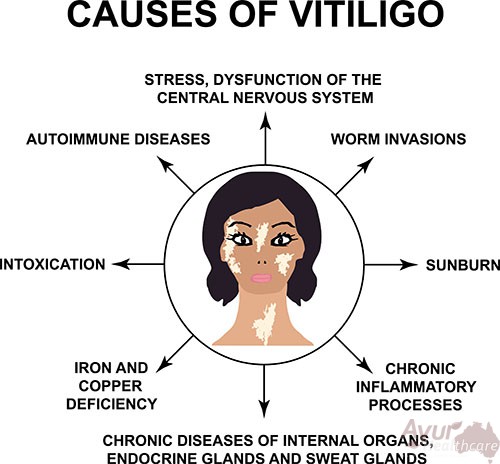What is Vitiligo?

What is Vitiligo? It is an autoimmune disorder that causes patches of depigmentation on skin. In people with the disease, this depigmentation can occur on the eyes, eyelids, hair, skin, and in some cases, the genitals. While not life-threatening, vitiligo can be distressing. Patients with the condition may find it difficult to cope with their changing appearance and may feel self-conscious about their appearance. Some people also experience an increased risk of skin cancer.
The symptoms of vitiligo can start and stop at any time and vary from person to person. Some people experience gradual or progressive loss of skin color. In others, the affliction may be stable and slowly increase in size. It can also affect the hair follicles and cause a significant aesthetic problem. The autoimmune disorder is usually caused by a reaction from the immune system to the melanin cells of the skin, hair, or inner ear.
Treatments for vitiligo include light therapy, medicine, and surgery. While some treatments work, others do not and can cause unwanted side effects. It is best to discuss the condition with a physician to learn more about the treatment options available. A doctor will perform a physical exam and take lab tests if needed. If vitiligo is affecting more than half of the body, a surgical procedure may be necessary.
The best way to treat vitiligo is to treat it early. A corticosteroid cream can help you restore the color of your skin. However, this treatment may take several months, and the skin may continue to discolor even if you use the treatment. A doctor can also prescribe you a medication to slow down the process. There are no known cures for vitiligo, but you can try different types of therapy to reduce the progression of the disease and return some color to your skin.
Treatments for vitiligo include a corticosteroid cream, which can help restore your skin’s color. This cream can be used on a daily basis but takes months to take effect. While a corticosteroid ointment can help your skin to become more pigmented, it will not prevent the skin from losing color. If you have symptoms of vitiligo, you may also need to see a dermatologist.

One of the first steps to treating vitiligo is to visit a doctor. The patient can choose to undergo a biopsy to determine the cause of the problem. A corticosteroid cream can improve the skin’s color, but the treatment can take months to show results. Despite the fact that vitiligo is a genetic disorder, it is a condition that can be treated with the right medications and treatment.
Signs of vitiligo are usually found on the face, arms and legs. Initially, the affected areas look pale and may appear white. They can also appear on the genitals, in the groin and in the groin. Other areas of the body may also be affected. The symptoms of vitiligo are usually painless, but can be irritating or even painful.
Vitiligo symptoms usually begin to appear on the skin in areas exposed to sunlight. As the condition progresses, the spots may turn white and become inflamed. In some people, vitiligo also causes hearing loss or uneven, whitish skin. The symptoms of vitiligo are the same for both sexes, and it is not uncommon for a child to experience both.
A diagnosis of vitiligo is not a life-threatening condition. It is rare and affects 1% of the world’s population. Victims can be male or female and of any age. Unlike other skin conditions, vitiligo is often present at birth, although many people often don’t have it at birth. A person often has white spots on the skin of the hands or neck. In addition to the visible symptoms, vitiligo can develop on the roots of the hair.
A vitiligo patient should not be ashamed of their disease. This disorder can make a person old and unattractive. It can also cause depression and cause sleep disturbances. It is important to seek medical help on the site Truth in Healthcare and find a good doctor for a patient with vitiligo. When a person has a disease, it should be treated as soon as possible. To prevent the disease from progressing, he or she must receive medication.
